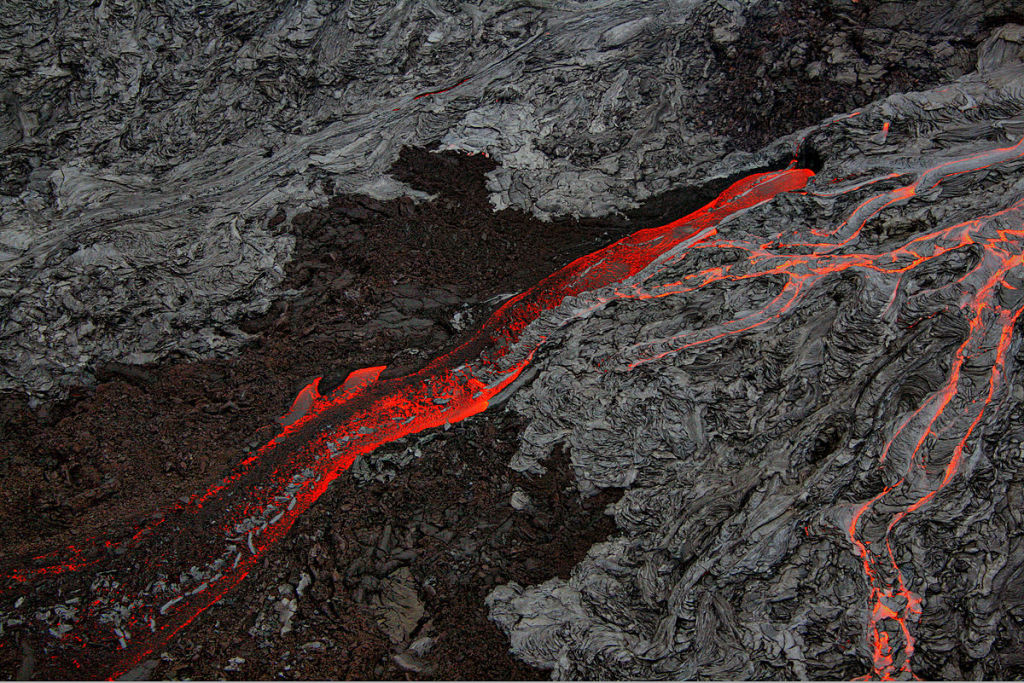American News
Entire Hawaii neighbourhood vanishes as lava gushes in

Molten rock entirely covered Vacationland and only a few buildings remained in the nearby Kapoho subdivision, officials with the U.S. Geological Survey said. (Brocken Inaglory / Wikimedia Commons)
HONOLULU — A neighbourhood called Vacationland on Hawaii’s Big Island had disappeared by Wednesday as lava poured into two oceanfront subdivisions, smothering hundreds of homes and filling an ocean bay, turning it into new land that now juts into the sea.
Molten rock entirely covered Vacationland and only a few buildings remained in the nearby Kapoho subdivision, officials with the U.S. Geological Survey said.
“The bay is completely filled in and the shoreline is at least 0.8 miles out from its original location,” said Geological Survey geologist Wendy Stovall. “Vacationland is gone, there is no evidence of any properties there at all. On the northern end of that, there are just a few homes in the (Kapoho) beach lots area.”
Resident Mark Johnson is hopeful that his home on a citrus farm is one of those still standing. His ocean-view property sits on a ridge near the base of Kapoho crater, and he thinks the lava could have missed it.
“Basically we are up on that hill, so we’re still OK right now,” Johnson said.
But he has resigned himself to the possibility that he could lose his beloved farm, which he can’t access even if lava doesn’t cover it. The property isn’t far from a crater lake that the approaching flow vaporized days before entering his neighbourhood.
“I’m kind of at peace, actually,” Johnson said of potentially losing his home of 28 years. “I feel that I’ve had a really great experience.”
County officials said the two subdivisions have 279 homes, and most are feared destroyed from the most recent lava flows in the low-laying area.
“Over the course of essentially two days, that entire area was covered by lava,” Stovall said.
Molten rock from the erupting Kilauea volcano already has destroyed at least 117 homes in the Lanipuna Gardens and Leilani Estates neighbourhoods where lava surfaced more than a month ago. The total number of homes destroyed in the eruption stands at about 400.
Scientists are still recording vigorous volcanic activity. While only one crack in the ground is spewing molten rock and the height of fountaining lava has decreased in recent days, “it’s still really impossible to tell,” when it will end, Stovall said.
A magnitude 5.6 earthquake struck the summit of Hawaii’s Kilauea volcano summit, sending a plume of ash and rock about 10,000 feet (3,048 metres) into the sky Wednesday.
The lava inundation is among the most destructive and costly in volcano property loss in U.S. history. While no one has been killed and only one lava-related injury has been reported, the number of destroyed homes dwarfs other recent American eruptions.
It comes as a volcano erupted in Guatemala on Sunday and left 99 dead and nearly 200 missing.
In Hawaii, previous eruptions have destroyed small towns, but nothing on the scale of this outbreak. Lava flows destroyed homes and other buildings in the same area in 1955 and 1960, but the town of Kapoho was less densely populated at that time.
Between 1983 and 2014, a Kilauea eruption razed homes in and around the town of Kalapana. Over the course of about eight months in 1990, 214 homes were destroyed in that area. One home was lost in a separate 2014 lava flow in the commercial hub of Pahoa.
Even major explosive eruptions like that of Washington state’s Mount St. Helens in 1980 didn’t result in the same number of homes lost. That volcano and others in the region that have had recent eruptions are very remote with few people living nearby.
At Kilauea’s summit, increased earthquake activity has led to explosive eruptions, some of which have shot rock and ash high into the air.
“We expect larger explosions will continue at the summit,” Stovall said Wednesday.
Jessica Ferracane, spokeswoman for Hawaii Volcanoes National Park, was on the summit Wednesday and said three “sizable” earthquakes hit in the two hours she was there.
“It’s a beautiful blue day, but it really seems eerie up there, lots and lots of ash covering areas near Jagger Museum and the earthquakes really make things seem very unsettled,” she said.





















